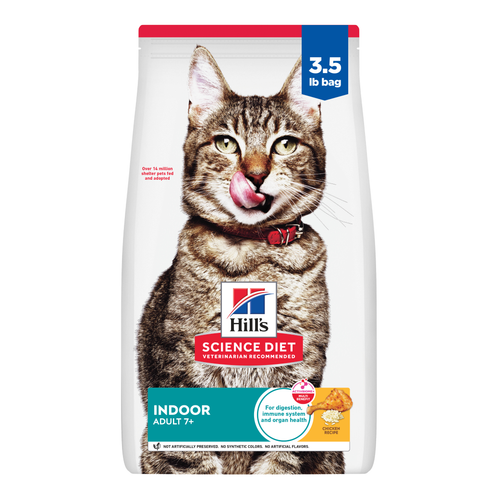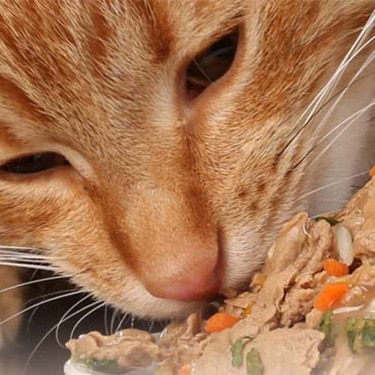
-
Find the right food for your petTake this quiz to see which food may be the best for your furry friend.Find the right food for your petTake this quiz to see which food may be the best for your furry friend.Featured products
 Adult Large Breed Chicken & Barley Recipe Dog Food
Adult Large Breed Chicken & Barley Recipe Dog FoodSupports healthy joints, lean muscle, and beautiful coat for large breed dogs
Shop Now Adult Chicken & Barley Recipe Dog Food
Adult Chicken & Barley Recipe Dog FoodSupports lean muscle and beautiful coat for adult dogs
Shop Now Hill's Science Diet Adult Chicken & Beef Entrée Dog Food
Hill's Science Diet Adult Chicken & Beef Entrée Dog FoodChicken & Beef Entrée in a delicious loaf with complete & balanced nutrition to help keep adult dogs active and healthy
Shop NowFeatured products Adult Turkey & Liver Entrée Cat Food
Adult Turkey & Liver Entrée Cat FoodPrecisely balanced nutrition with the delicious taste of minced turkey & liver to help fuel the energy needs of cats during the prime of their life
Shop Now Adult 7+ Indoor Chicken Recipe Cat Food
Adult 7+ Indoor Chicken Recipe Cat FoodSupports energy level and beautiful fur in mature indoor cats
Shop Now Senior Vitality Adult 7+ Tuna & Vegetables Stew
Senior Vitality Adult 7+ Tuna & Vegetables StewImproves Everyday Ability to Get Up & Go
Shop Now -
Dog
- Dog Tips & Articles
-
Health Category
- Weight
- Food & Environmental Sensitivities
- Urinary
- Digestive
- Joint
- Kidney
-
Life Stage
- Puppy Nutrition
- Adult Nutrition
- Senior Nutrition
Cat- Cat Tips & Articles
-
Health Category
- Weight
- Skin & Food Sensitivities
- Urinary
- Digestive
- Kidney
-
Life Stage
- Kitten Nutrition
- Adult Nutrition
Featured articles The Science Behind Our Love for Pets
The Science Behind Our Love for PetsLearn the scientific reasons why we have such strong connections with our pets, and what science says about the love between humans and our furry friends.
Read More What Is Littermate Syndrome? Pet Adoption Guide
What Is Littermate Syndrome? Pet Adoption GuideLearn more about littermate syndrome in dogs and cats and how to successfully navigate adoption and early socialization processes.
Read More How to Properly Mix Wet & Dry Pet Foods
How to Properly Mix Wet & Dry Pet FoodsAn Orange cat eating from a bowl filled with mixed food
Read More -


During your evening stroll around the neighborhood, you may have noticed more and more pet parents walking a cat on a leash. But before trying this out with your own fur baby, assess whether it's something they might enjoy. After all, walking a cat isn't like walking a dog. If you decide you're ready to learn how to teach a cat to walk on a leash, you can take steps to help them adjust — and hopefully, enjoy taking a stroll with you.
Should You Walk Your Cat?
Veterinarians and wildlife and animal welfare experts agree that cats should live indoors. It's safer for your cat, and it helps protect wildlife such as birds and reptiles. While some cats seem to have no desire to set foot outside, others are clearly curious about the world beyond your windows. Taking your cat on a walk with the security of a harness and leash can be a great way to help satiate your feline friend's curiosity and provide them with mental stimulation and a little exercise. Here are some factors to consider that may influence whether walking your cat on a leash is right for you and your pet.

Personality
You know your cat's personality best. Are they curious about new things? Do they love to sniff and rub their face all over new items you bring into the home? Is one of their favorite forms of entertainment looking out the window? Then they might enjoy a walk. If your cat is shy, shows little interest in what's going on in the outside world and isn't particularly curious about checking out new things, they may be content to stay right where they are.
Age
Kittens are more likely to enjoy a walk because their preferences and behaviors are still being shaped. The ideal socialization window for a kitten is from about 3 weeks to 3 months old, during which they're more accepting of new experiences. Some older cats can be trained with patience, but if you think you'll want to walk your cat, it's best to start them young.
Breed
Are certain cat breeds more amenable to walking? Not necessarily. But you should be aware that the great outdoors can be full of allergens, and some breeds, such as Bengals, Abyssinians and Devon Rexes, may be more prone to grass or pollen allergies. The common domestic shorthair cat can also develop allergies, however. Cats with flatter faces, such as Persians, can't tolerate heat and humidity like other breeds can. If you're taking your cat outside and you notice them itching or developing scabs, put the walks on hold and talk to your vet.
Walking Your Cat: How to Get Started
The first step to taking your kitty for a stroll is to select your equipment. Look for a secure harness made for cats with a ring on the back to attach to a leash. Never attach the leash to their collar or anything that fits around their neck. When in doubt, ask your vet or store personnel for help with size and fit. Have fun with it! Leashes and harnesses come in lots of different colors, patterns and materials that can reflect your cat's unique personality.
Just as you would when transitioning to a new food or introducing a grooming practice to your cat's usual routine, start slowly. Set out the harness and leash on the floor for the first day or two so your cat can sniff and play with them and become accustomed to their new supplies. Allow them to wear their harness around the house before giving it a test drive outside. You can also practice with the leash by leading them indoors to help get them comfortable with the feeling. Gauge your cat's interest. If they don't seem excited about it at first, try it a couple more times. Sweeten the deal and encourage positive associations by giving them a special treat after each time you suit them up in their harness.


Tasty Tips

Best Practices and Considerations
When it's time to take your cat outside for a stroll, keep the following things in mind before you leave home:
- Always make sure they're wearing a properly fitted collar with an updated ID tag. It's also a good idea to look into microchipping your cat if you plan to take them outdoors so you can find them in the event they get lost.
- Confirm your cat is up to date on flea, tick and heartworm medicine. This is a good idea for all cats, but it's especially crucial for kitties going outdoors.
- Consider the weather. A cat who's used to sitting in a 70-degree Fahrenheit home all day probably isn't prepared for cold winter walks. The same can be said of rain.
- Keep your cat on a short leash. Chances are you'll meet people out walking their dogs, and this will help keep your cat safe from any unwanted encounters. It will also help keep them out of range of any wildlife that might pique their interest.
- Try a cat stroller. While your cat won't get the same exercise, this method still offers a great bonding opportunity and provides your cat with a little fresh air and excitement. Make sure that your cat is secure in the stroller and that they're wearing their collar with ID tags.
When you take your cat outside for the first time, keep it brief. Just a few minutes at a time will do until they're comfortable with being outside. They'll most likely perform what many pet parents refer to as the "cat flop," where they go limp and refuse to move. That's OK — giving your cat time and space will help you understand if walking them is worth the time and effort. "If your cat is stalling or crouching on a walk or tries to escape [they] might be scared," explains the SFSPCA, "and going for walks is not a good way of enriching a fearful cat's life." Pay close attention to your cat's body language and never force it.
If you think your cat is up for the challenge — you know them better than anyone — walking a cat is a great way for both of you to get some exercise. As long as you keep their health, comfort and security top of mind, you might just become the next pet parent-cat duo walking down the block.


Christine O'Brien is a writer, mom, and long-time cat parent whose two Russian Blues rule the house. Her work also appears in Care.com, What to Expect, and Fit Pregnancy, where she writes about pets, pregnancy, and family life. Find and follow her on Instagram and Twitter @brovelliobrien.
Related products

Supports energy level and beautiful fur in mature indoor cats

Delectable chunks with tender chicken smothered in a rich gravy

Precisely balanced nutrition with the delicious taste of minced turkey & liver to help fuel the energy needs of cats during the prime of their life

Improves Everyday Ability to Get Up & Go
Related articles

Learn how to litter train a kitten with this guide to potty training, including when to start litter training kittens and troubleshooting tips.

When you adopt a cat, you don't just gain a best friend; you also save her life. Here's why getting a cat from a local animal shelter makes so much sense.

Discover how to train your cat, starting with very basic first steps that both reward good behavior and discourage the bad.

Discover which cat toys games your feline friend might like, and how they are great sources of exercise. Explore our library of articles to learn more.

Put your cat on a diet without them knowing
Our low calorie formula helps you control your cat's weight. It's packed with high-quality protein for building lean muscles, and made with purposeful ingredients for a flavorful, nutritious meal. Clinically proven antioxidants, Vitamin C+E, help promote a healthy immune system.
Put your cat on a diet without them knowing
Our low calorie formula helps you control your cat's weight. It's packed with high-quality protein for building lean muscles, and made with purposeful ingredients for a flavorful, nutritious meal. Clinically proven antioxidants, Vitamin C+E, help promote a healthy immune system.

